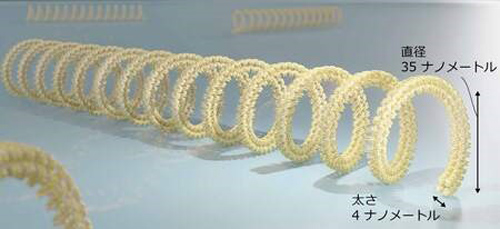Designing the world’s smallest coiled spring using DNA as a material and succeeding in measuring minute forces on cells NICT and RIKEN

The National Institute of Information and Communications Technology (NICT) and the National Institute of Physical and Chemical Research (RIKEN) have designed the world’s smallest coiled spring using DNA as a material, and succeeded in ultra-sensitive measurement of minute forces on cells.
If they can elucidate the “mechanism of information processing of ultra-energy-saving mechanical force in the brain and cells,” which is still unknown in detail, it is expected to lead to the development of computers based on new principles.
In this research, they designed the world’s smallest protein-sized coiled spring (nanospring) using DNA as a material, and connected it between the cell and the glass substrate to transmit “micromechanical information (size and direction)” to the cell. Succeeded in the world’s first precision measurement with sub-picoNewton accuracy. A nanospring with a diameter of 35 nanometers and a length of 200-700 nanometers was designed, and one end was connected to the integrin present on the surface of the cell membrane, and the other end was connected to the glass substrate outside the cell. When mechanical information was exchanged between the two, the nanospring was observed to extend or shorten, and a change in the direction of extension could be observed at the same time. Furthermore, by developing a new method for precise image analysis of these changes with nanometer accuracy, they were able to simultaneously measure temporal variations in the magnitude and direction of the force. Realizing nanometer-resolution measurements has made it possible to easily detect dynamic fluctuations, including minute forces at the noise level (up to 1 piconewton).
